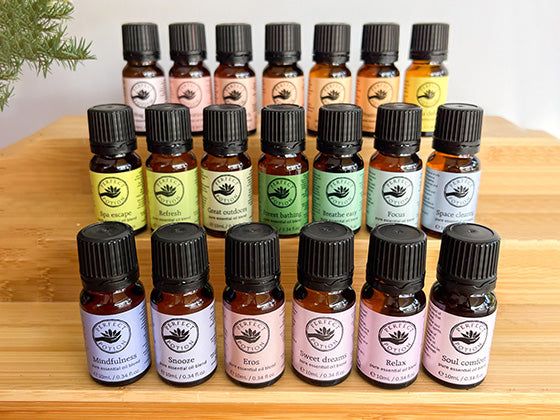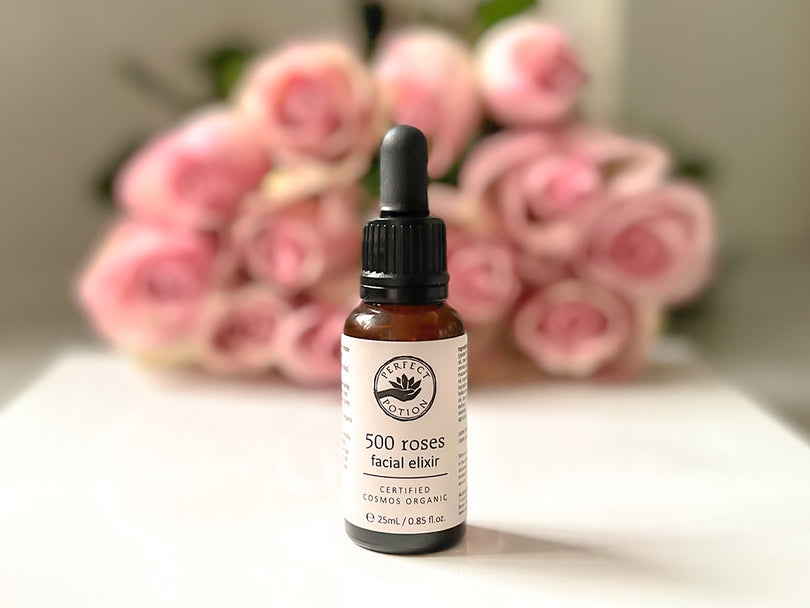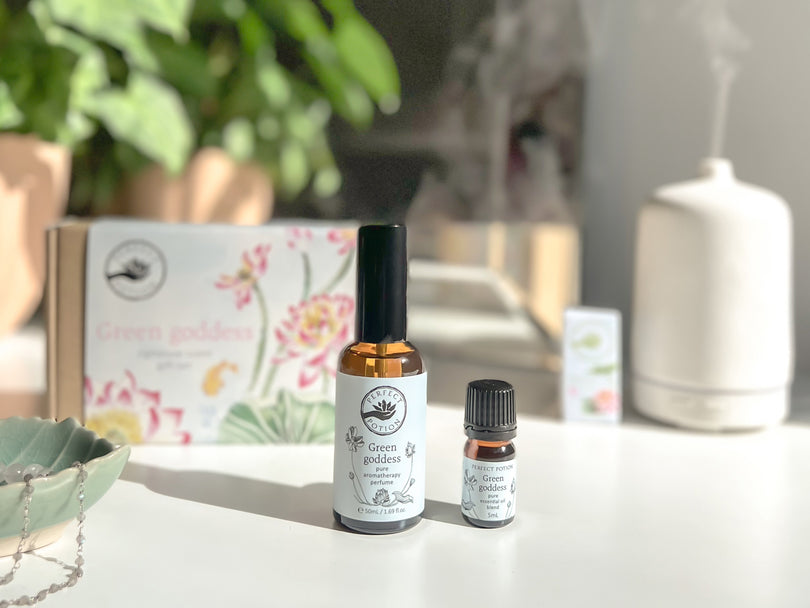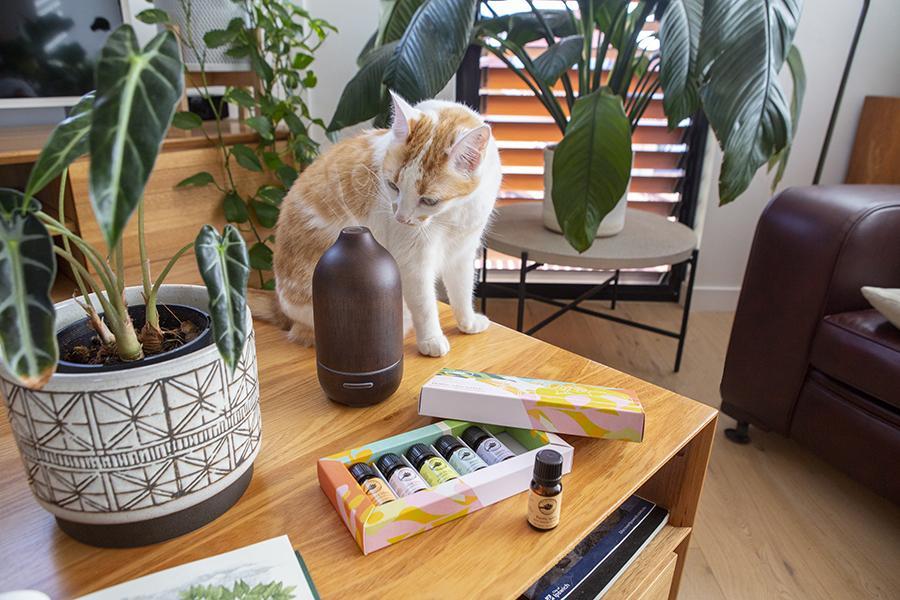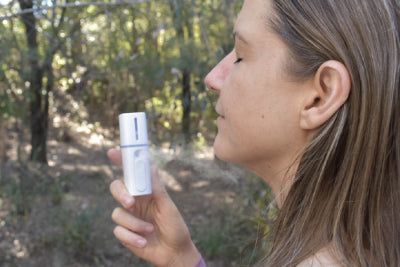Can essential oils be safely used with cats? Several posts on social media and online suggest that vaporising essential oils around your cat can be toxic and dangerous. I can confidently state that we have diffused essential oils around Memsahib, our Abyssinian cat for 16 years and not once did she display any signs of overexposure from the oils.
|
Memsahib snuggling up to Sal |
In this blog, I would like to deal with the facts regarding whether essential oils can be safely used with cats. Sadly, the facts are often misconstrued or misinterpreted leading to the creation of urban myths.
So where did this idea that essential oils are not safe to use around cats come from? I believe that the safety concerns regarding the use of essential oils on and around cats originate from the fact that the domestic cat is unable to metabolise phenolic compounds as well as any structurally related toxicants found in the diet and environment by glucuronidation. Studies have found that cats have a slow clearance of such compounds compared with dogs and most other mammalian species.1 |
What is being said online
The Aromatherapy Trade Council (ATC) states that cats are especially susceptible to the effects of essential oils since they do not possess the required enzymes to break down and metabolise them, and if used inappropriately or over long periods they could have fatal consequences.2
However, they do not immediately make it clear what they mean by ‘inappropriate use’. They go on to say that:
We know that some websites claim that some essential oils are ‘safe’ for certain animals, but the truth is that nobody really knows, since to our knowledge, there has never been any serious scientific or medical research into this subject made public.2
My concern with this comment is that the word ‘animal’ is very confusing. The truth is that the way in which a cat metabolises essential oils is very different from that of a dog or that of any other animal.3
Also, we know that the topical application of neat essential oils can indeed be dangerous and toxic to a cat.4
The ATC website goes on to suggest that unless one has had the necessary professional training, they recommend that you never use essential oils on your pets – either diluted or undiluted. I believe that this warning is unnecessarily alarmist and is no different to saying that unless you are a professionally trained aromatherapist, you should never be allowed to use essential oils – for any purpose!
The ASPCA Animal Poison Control Center states that cats exposed to essential oils can absorb the oils through their skin or orally. They state that there is a risk when applying the essential oils at a high concentration directly onto cats to treat open wounds or ear mites.5
They also correctly advise us:
We don’t want to use dog products on cats. Cats are special. They don’t have a whole lot of metabolyzing enzymes in their liver unlike other animals, so they’re a lot more sensitive to a lot of toxins.5
|
Memsahib hanging out with Charlie |
They make it very clear that the main risk is topical application of high doses of essential oils.5 When it comes to diffusion, they state that it is advisable to avoid using a diffuser for extended periods of time in order to minimise the risk that oil droplets could get onto their fur. The most common symptoms for cats exposed to essential oils are drooling, coughing and sneezing.5 Another website suggests that care should be taken not to allow the essential oil droplets to collect on the cat’s fur if it is in the same room as the diffuser. They suggest that the risk is that the oil can be absorbed directly through the skin or ingested when the cat grooms itself. This same website then warns us that concentrated essential oils should never be directly applied to cats.6 |
Once again, the warning for concentrated oils directly onto the skin is made. However, I agree with Tisserand who states that the small amount of essential oil vapour that is diffused into the air from a diffuser is so small that the risk to cats is minimal.7
Tisserand suggests that a few parts per million of aromatic vapour is not likely to be harmful, but suggests we should be careful to avoid a build-up of vapours over many hours. This would mean ensuring that the space in which the diffuser is being used is well ventilated.7
We need to keep things in perspective. We usually place 3 to 5 drops of essential oil into a diffuser. This is such a minuscule amount of essential oil being diffused into a room over 2 to 4 hours. All of the toxicology reports state that much larger volumes of essential oils are involved and topically applied.
I was a little perplexed by a statement made in one website that suggests that 70% of the essential oil molecules being diffused get into the body, while the rest simply evaporates. I would really like to know where they obtained that information – I somehow doubt that it would be more than a few percent.8
One website cites Susan G. Wynn and Barbara Fougère, authors of Veterinary Herbal Medicine, who state that the following essential oils are potentially toxic to cats:9
Basil, birch, clove, hyssop, oregano, pennyroyal, savory, tansy, tarragon, tea tree, thuja and wintergreen.
I have no problems with this list of oils as they can potentially be toxic to human.
This website wisely recommends that essential oils not be applied directly onto the cats and when diffusing essential oils to ensure good ventilation and fresh air circulation and ensure that your cat can leave the area being diffused.9
Tea tree toxicity
Bischoff & Guale document a case of tea tree poisoning involving 3 adult purebred Angora cats, one of which died. The cats were severely infested with fleas, so they were shaved and pure tea tree essential oil was applied directly to the cats’ skin. It is reported that 60 ml was used on the three cats.4
Within 5 hours of the treatment one cat was brought to the vet. It was hypothermic and uncoordinated. It was unable to stand but was alert. The other two cats were admitted later that same day. The second cat was comatose with severe hypothermia and dehydration, while the third cat was alert and nervous, slightly ataxic, and trembling.4
The cats were bathed in warm water and a mild detergent to remove any remaining oil from the skin. Activated charcoal was orally administered to adsorb any ingested tea tree and the cats were all given dexamethasone. While two of the cats recovered after 48 hours, one of the cats died.4
Does this mean you should not use tea tree-based products on your cat?
No – it means you should not ever use neat tea tree oil on your cat.
Tisserand suggests it is ok to occasionally use tea tree up to 5% on cats, and pennyroyal may be safe at up to 1%, but it is probably best avoided. He also suggests that sensibly used, most essential oils are safe to use in pet grooming products, or for low-level, intermittent diffusion.7
Evidence for poor glucuronidation in cats
It has been identified that the domestic cat is unable to metabolise phenolic drugs as well as any structurally related toxicants found in the diet and environment by glucuronidation. Glucuronidation is catalysed by the UDP-glucuronosyltransferases (UGTs), a superfamily of conjugative enzymes predominately found in the liver that transfer glucuronic acid to a drug (or chemical compound) yielding a nontoxic, more water-soluble and readily excreted glucuronide metabolite. Studies have found that cats have a slow clearance compared with dogs and most other mammalian species.1,3
Cats are also deficient in several other conjugation enzymes. One paper states the need for dose reduction of drugs requiring glucuronidation given to cats is without adequate justification.10
It is also worth noting that benzyl alcohol and benzoic acid are compounds that are frequently added to drugs as preservatives. Benzyl alcohol is metabolised to benzoic acid and excreted as the glucuronide or glycine conjugate in most species. However, cats are unable to glucuronidate benzoic acid, but can glycinate it although relatively slowly. Benzoic acid poisoning has been reported in cats and it is recommended that the amount of benzyl alcohol and benzoic acid used in preparations for cats be minimised.10
While cats lack the UDP- glucuronosyltransferase activity, some studies have confirmed that the comparative metabolism of mycophenolic acid conjugation is quantitatively similar between liver microsomes from cats, dogs and humans despite large differences in the conjugation pathways that are utilised by these species.11 Shelton suggests that this study indicates that while cats are deficient in UDP- glucuronosyltransferase, they are able to perform glycoxidation as efficiently as humans and dogs. This indicates that they have other pathways of metabolism.12
Therefore, it is not true to assume that cats are not well equipped to metabolise essential oil components because they lack the liver enzymes glucuronosyltransferase.
 |
 |
| Big sister Charlie taking good care of Abbey on her first day at home. P.S. It’s winter in Australia so I am sure Charlie is like a big furry hot water bottle for Abbey. | |
Zoopharmacognosy
I feel it is very important to introduce you to the work of Caroline Ingraham. I believe her work provides us with the confidence to use essential oils safely around cats.
Zoopharmacognosy is a term used to describe how animals self-medicate. Ingraham has applied this to the treatment of domestic or captive animals by encouraging the animal to be guided by its own health and select its own remedy. Once the animal has selected its remedy, it will then guide the session by inhaling it, taking it orally, or by rubbing a part of its body onto it. She explains that once the condition has improved, the animal will normally reject the plant extracts that was chosen.13
When working with cats, she explains that it is best to read the cats’ response to the aromas and not force any on them. Ingraham states that even though cats do not have the metabolism to efficiently metabolise some essential oils, they are able to cope with plant oils and extracts they require. She states it is a great shame that some individuals believe that essential oils should not be offered to cats, because when offered correctly, they can benefit the cat both physically and behaviourally.13
She states that cats will rarely choose to ingest essential oils, preferring to inhale them; however, she states that it is very important to not let a cat accidentally touch neat essential oils. If this does accidentally happen, before the cat has an opportunity to lick the oil from its coat, wipe it off with a vegetable oil or milk as these fatty substances will absorb the essential oils more readily. She explains that essential oils are generally not applied to cats topically for any condition, except in certain situations.13
Ingraham provides us with some excellent advice when working with cats and essential oils. Some cats will work more closely with the oils, putting their nose directly over the aroma. Cats generally prefer to work with one oil at a time, unlike many other animals, where two or more may be offered to the nostrils for selection purposes or support.13
Ingraham states that essential oils can be used to help with behavioural problems and to help release past trauma. However, she does warn that some of the essential oils that work on conditions of a behavioural nature may elicit biting or hissing as a release. She states that the following reactions indicate that you should persevere with the oils:13
- Licking the air
- Stillness
- Coming close to inhale the oil
- Yawning
- Stretching
- Blinking, squinting
- Eyes closing
- Grooming
- Purring
- Breathing pattern changes
- Puffing cheeks
- Shallow panting
- Open gape. The bottom jaw drops, taking in and savouring aromatic odours.
However, she explains that some positive reactions may be mistaken for negative reactions:13
- A grimace could be mistaken as a reaction to an unpleasant odour.
- Hissing, growling and biting. Ingraham states that this usually does not last very long and seems to signify an emotional release.
- Eyes squinting is often thought to occur because the oil is too strong and is therefore stinging the eyes. However, Ingraham states that this often occurs regardless of the strength of the oil and the cat will not usually exhibit this behaviour with oils that offer no interest.
She explains that when cats display the following reactions, it is a sign that the oil is not required at that time and that you should move onto another oil:13
- No reaction
- Running away
- Sudden turning of the head.
Shurkin states that it is not clear how much knowing or learning is involved in zoopharmacognosy but suggests that animals have evolved an innate ability to detect therapeutic constituents in plants. While there are many examples of animals self-medicating, most of the evidence is circumstantial. Most of the studies of animal self-medication have been done with the great apes.14
Not everyone agrees with zoopharmacognosy. A study involving diseased laboratory mice provided conflicting evidence. The results did not support self-medication in laboratory mice. The authors of this study stated that the prolonged inbreeding of the mice in captivity may have led to this result.15
An article in the SkeptVet website, The Natural Nonsense that is Applied Zoopharmacognosy, is particularly critical of Ingraham’s practice of Applied Zoopharmacognosy, in which domestic animals will self-medicate and chose the remedy that is best for them. The author of this article states that there is some evidence that animals in the wild sometimes select plants to eat that may have health benefits.16
However, I have a feeling that this author is very sceptical of all natural therapies. Especially when the following comment is made about aromatherapy:16
Given that “aromatherapy” is a dubious practice and there is little evidence for any benefits that are not psychological in nature, studying with “experts” in this field is not a credential that carries much weight.
I don’t think there is any point in trying to prove to this person the benefits of aromatherapy – they have already made up their mind!
However, I must admit to being very confused at the behaviour of Memsahib who would always insist on licking an aromatherapy balm that I would apply to my sore muscles. This balm contained very high doses of essential oils such as rosemary, peppermint, black pepper, ginger and wintergreen. I would of course not let her lick the balm, but I could not help notice that she would take such pleasure in licking it off my skin. By the way, she never got to lick it more than once and she never displayed any symptoms we are often warned about of essential oil overdosing in cats.
Certainly, we know that these are some of the essential oils that we have been told are highly toxic for cats. So why was Memsahib trying to lick something which could be potentially toxic to her?
Oscar the therapy cat
Now I am getting off the topic, but if you have got this far, you are a cat lover so I am sure you will enjoy this story.
While I was researching aromatherapy and cats, I came across the story of Oscar the cat. Oscar had an uncanny ability to predict when residents in an aged care facility were about to die. The staff of the Steere House Nursing and Rehabilitation Center in Providence, Rhode Island state that Oscar presided over the deaths of more than 25 residents. His mere presence at the bedside was viewed by doctors and nursing home staff as an almost absolute indicator of impending death. This allowed staff members to notify family. They claim that Oscar also provided companionship to those who would otherwise have died alone.17
This beautiful extract from the New England Journal of Medicine which published the story of Oscar tells it all:17
Within a half hour the family starts to arrive. Chairs are brought into the room, where the relatives begin their vigil. The priest is called to deliver last rites. And still, Oscar has not budged, instead purring and gently nuzzling Mrs K. A young grandson asks his mother, “What is the cat doing here?” The mother, fighting back tears, tells him “He is here to help grandma get to heaven.” Thirty minutes later, Mrs K takes her last earthly breath. With this, Oscar sits up, looks around, then departs the room so quietly that the grieving family barely notices.
There is no doubt that cats have a special intuitive connection with us.
Conclusion
We know that most of the risks involving the use of essential oils and cats come from the topical application of high doses of essential oils.
I do not believe that there are any essential oils that one should avoid diffusing around cats. The exception would be the list that Shelton provides below, which would also not be suitable for humans. When using essential oils in a diffuser around cats, ensure that you do not leave your diffuser running all day. Use it in a well-ventilated room with fresh air and ensure that your cat can leave the area that is being diffused. If using in an enclosed space, no more than 30 minutes should be enough.
Shelton provides us with a list of essential oils that are contraindicated for cats:12
Bitter almond, boldo, calamus, garlic, horseradish, mustard, sassafras, wormseed (Chemopodium) and pennyroyal are likely to be found on anyone’s list of oils that are not commonly used or recommended for use, even on humans.
Not surprisingly, these essential oils are also contraindicated for use on humans.
Tisserand advises us to never apply neat essential oils directly to the cats. Topical preparations with 1% essential oils are generally safe as long as they are used only occasionally.7
In conclusion, I would like to share with you some good old-fashioned commonsense advice from veterinarian Melissa Shelton:12
I urge you to always look at each research article, Facebook post, reference book, or blog with a critical eye … I merely urge a stance of critical evaluation, instead of fear-based poorly documented reports and concerns.

Abbey watching the world cup live on TV at 3.00am with Sal. I think Abbey would prefer to be on the field chasing the ball
Final note
Earlier this year at the age of 16, Memsahib sadly passed away. We recently went to the RSPCA animal shelter in Brisbane and came home with an 11-week old kitten named Abbey, who is very energetic and smoochy. Charlie, our 13-year old beagle, loves to play with Abbey.
We do live in a small apartment which has very good ventilation. I do love my morning and evening rituals using the aromatherapy ultrasonic diffuser, which do not bother Charlie or Abbey.
References
- Shrestha B et al. Evolution of a major drug metabolizing enzyme defect in the domestic cat and other Felidae: phylogenetic timing and the role of hypercarnivory. PLoS ONE, 2011; 6(3):e18046
- Cats and essential oil safety. Retrieved June 24, 2018, from https://www.a-t-c.org.uk/recent-articles/cats-essential-oils-safety/
- van Beusekom CD, Fink-Gremmels J. Schrickx JA. Comparing the glucuronidation capacity of the feline liver with substrate-specific glucuronidation in dogs. Journal of Veterinary Pharmacology and Therapeutics, First published 24 July 2013. https://doi.org/10.1111/jvp.12067
- Bischoff K, Guale F. Australian tea tree (Melaleuca alternifolia) oil poisoning in three purebred cats. J. Vet Diagn Invest 1998; 10:208-210.
- Are essential oils poisonous to cats? Retrieved June 24, 2018, from https://www.snopes.com/fact-check/are-essential-oils-poisonous-to-cats/
- Benson K. Essential oils and cats. Retrieved July 9, 2018, from http://www.petpoisonhelpline.com/blog/essential-oils-cats/
- Tisserand R. Cats and essential oil safety. Retrieved May 8, 2018, from http://roberttisserand.com/2011/06/cats-essential-oil-safety/
- Diffusing essential oils around cats. Retrieved on July 9, 2018, from https://www.essentialbazaar.com/diffusing-essential-oils-around-cats/
- Aromatherapy for cats. Retrieved June 24, 2018, from http://felinewellness.com/aromatherapy-for-cats/
- Court MH. Feline drug metabolism and disposition: pharmacokinetic evidence for species differences and molecular mechanisms. Vet Clin North Am Small Anim Pract. 2013; 43(5). doi:10.1016/j.cvsm.2013.05.002
- Slovak JE, Mealey K, Court MH. Comparative metabolism of mycophenolic acid by glucuronic acid and glucose conjugation in human, dog and cat liver microsomes. J. Vet Pharmacol Ther. 2017; 40(2):123-129. doi: 10.1111.jvp.12338
- 12. Shelton M. The science behind cats and essential oils. Retrieved June 23, 2018, from https://londonalternativevet.com/2018/01/12/essential-oils-with-pets-dr-melissa-shelton/
- Ingraham C. How animals heal themselves. Ingraham Trading Ltd, Bristol, 2014.
- Shurkin J. News feature: animals that self-medicate. PNAS, 2014; 111(49):17339-17341.
- Kapadia M et al. Zoopharmacognosy in diseased laboratory mice: conflicting evidence. PLoS ONE, 2014; 9(6) e100684
- The natural nonsense that is applied zoopharmacogosy. Retrieved July 7, 2017, from http://skeptvet.com/Blog/2016/10/the-natural-nonsense-that-is-applied-zoopharmacognosy/
- Dosa DM. A day in the life of Oscar the cat. Retrieved July 7, 2017, from https://www.nejm.org/doi/full/10.1056/NEJMp078108

